Glossika Review — The Best, But Not the Only
This is our full Glossika review updated for 2023 (with apps now released) — one of the few language learning apps we think you need — but it’s not the only one you need.
There are many language-learning apps out there that people like and enjoy — but we’ve found only two apps to be truly useful in learning a language quickly and efficiently: Glossika and Anki (a free flashcard app that’s the gold standard).
Even if we stop using Glossika every now and then when we’re feeling overwhelmed, we find that the sentences we learned months ago are still on the tips of our tongues.
Importantly — Does Glossika work? What are Glossika results like? If you’re curious, see the results of me studying Hebrew for 30 days. I used a mixture of Glossika sentences plus other ones I memorised too (also learning the grammar, as I suggest below). I came out OK!
Try Glossika for a Week for Free
Try Glossika’s method of teaching language through thousands of sample sentences. Learn languages by sentences spoken by native speakers in over 60 languages.

In this guide…
- How Glossika works in general (high-quality audio + spaced repetition)
- Why we like Glossika — three reasons why it’s one of the two apps we use
- How to use Glossika efficiently for language learning — nine tips from our experience with Glossika with a few different languages
- A few things we think Glossika should improve
- What Glossika costs and tips for free trials
- A bit about us and the languages we’ve used with Glossika
Disclaimer: If you buy Glossika through this Glossika Review we get a commission. You can’t get around it and get it cheaper — even we can’t! But this doesn’t affect our opinion and the honesty of our review.
Glossika Review Summary: Does “Listen and Repeat” work?
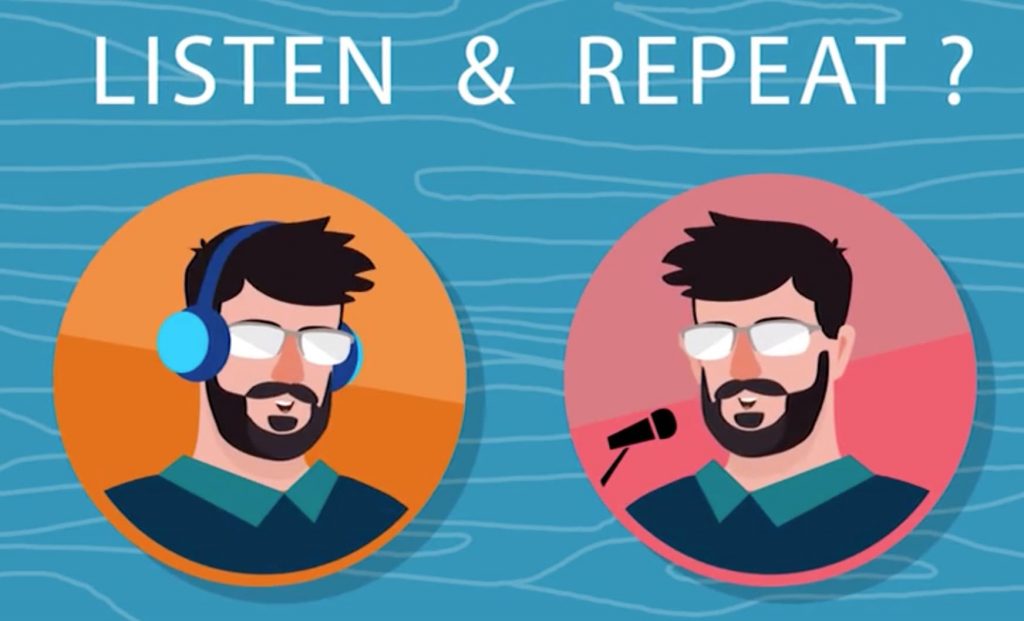
The core of Glossika is simple: listen and repeat.
When you sign up, you tell Glossika what you’re interested in. For example, you might be interested in “Travel”, “Social”, and “Rude”, which is as fun as it sounds.
Like me, you might not be interested in, for example, “Doctor” (any decent doctor in a good hospital speaks better English than whatever language I’m using) and “Crime” (I only commit crimes using English).
You’re then ready to start studying — and you are only learning things that are relevant to you.
Glossika counts each repetition as a “rep”. One thing I was curious about was: how many reps until I’m fluent? The answer, apparently is about 50-100,000, depending on the language and depending on how repetitive your studies. It took me a month to get to nearly 10,000 in Egyptian Arabic. So be patient.
Like this Glossika review? You might also like…
- Our favourite apps for language learning (there aren’t many)
- Our review of Speechling, the new darling of sentence-bank apps
- Pro tips for using Anki for flashcards
- Why apps aren’t enough, and we also like to use books
How to Use Glossika in a Nutshell
Here’s a summary of this Glossika review — how to use Glossika to learn a language in a nutshell.
- Sign up to Glossika obviously. You can try it for a week.
- Choose your source language. For example, I chose “English (UK)” (closest thing to Australian!)
- Choose your target language. For example, German, or Russian. One day, I’ll do those languages…
- Do a placement test. They ask you a series of questions, getting harder. Once you get too many wrong, they’ll start teaching you at that level — unless you override it and choose another.
- Start learning!
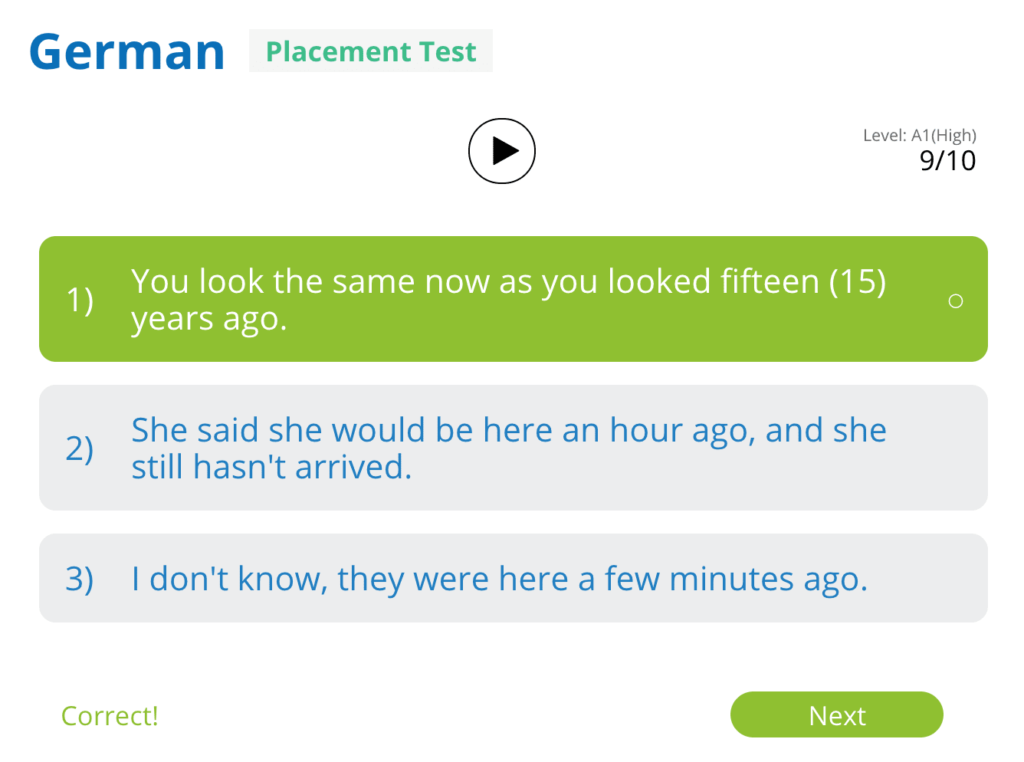
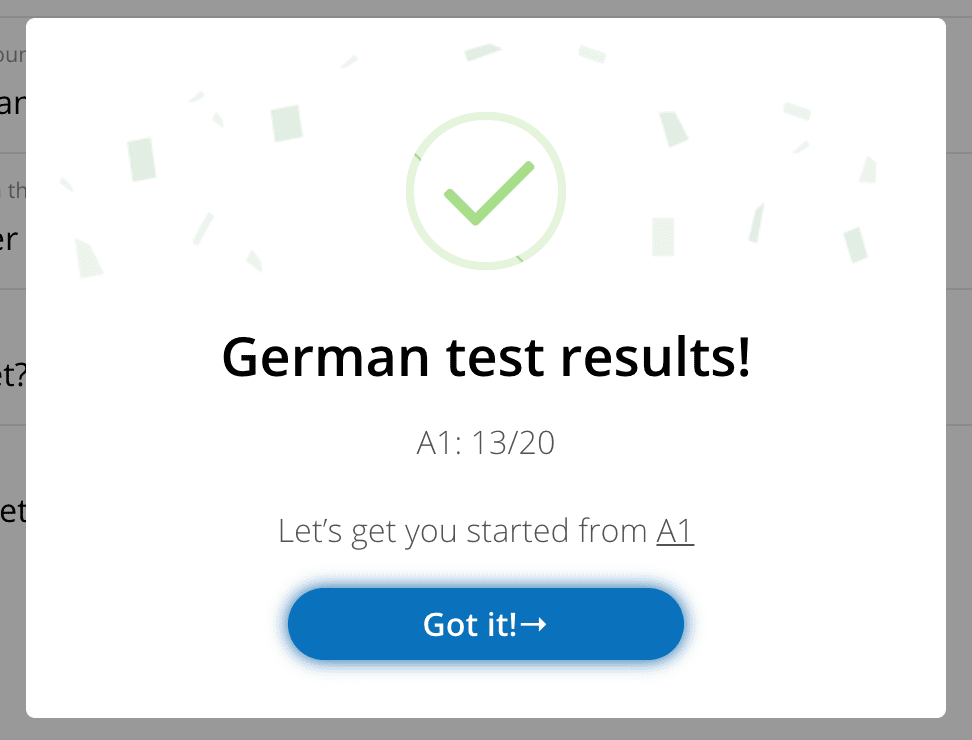
Once you’re done with your test, you can start learning.
Any time you want to learn new things, you click on “learn new items”.

Now Glossika starts serving sentences, repeating them a few times for you to study.
You can add more sentences as you feel comfortable. The idea is to make a study session in which you study for about 30 minutes with active listening. I personally find 5-10 new sentences pretty good. It is easy at first, but you’d be surprised how quickly it gets hard.
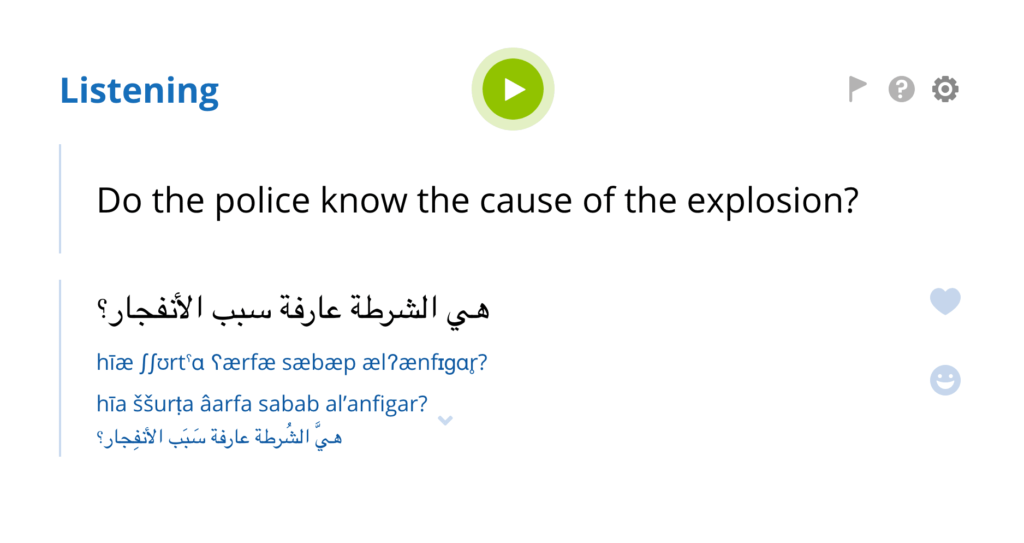
You have a few options on how to study. I really prefer “listening only”, and I modify settings to hear the sentence twice in the target language, and to give me a bit of time to repeat out loud.
I get very little utility out of typing, or out of recording (it just goes into the void anyway).
New for 2022: How’s the Glossika mobile app? (iOS only)
In 2022, Glossika addressed a long-standing issue — the mobile experience. Glossika now has an app, initially for iOS only.
To check it out, I re-took a placement test for Korean, and started adding kards at the B2 Low level.
The app gives a simple user interface to the core features of the Glossika website. It’s a huge improvement over the web experience on mobile.
The design is fairly simple visually, which is nice to see — it’s not complicated.
My only gripe is that there’s a lot of lag between actions (e.g. going to the next card — multiple seconds), I think because the app doesn’t download anything until it needs it. This makes the app seem slow.
So, the Glossika iOS app is an improvement over the base, but nowhere near as quick and easy as using an Anki deck.
Glossika has now also released an Android app, which works similarly to the iOS app.
Why Do We Use Glossika?
There’s an emerging school of thought that words don’t have an intrinsic meaning outside context. And many words definitely change subtly in meaning language-to-language.
Consider the sentence “It’s raining”. That’s how you express it in English. If you learn that the French verb for “to rain” is pleuvoir, though, and then try to translate ad-hoc, you might come up with “il est pleuvant“, which is a nonsense sentence. It’s “il pleut“.
Going the other way, if a French speaker tells someone in English “it rains”, the person to whom they’re speaking would be confused. “Where or when does it rain?”, the English speaker would wonder.
You’re fluent in a language, I believe, when you can confidently and spontaneously say sentences like this:
“Dang it! My pen rolled off the table and fell on the floor and now I can’t reach it!”
I can study a language for months and such a sentence might still elude me. But a small child would be able to say it without a second thought.
Glossika teaches full sentences that are very useful, spoken by natives, and asks you to repeat them.
Normally, we’re not really fans of apps — we prefer traditional language learning methods like books and teachers. We like Glossika because it’s not supposed to replace the entire language learning process — just part of it.
We’ve studied more than ten languages between us, and we find most apps to be games with an educational bent. Some of them are too hard to use to make effective use of the content (I could never make use of the content in Mondly, for example). Some do teach things, but only as a side-effect.
So here are some reasons we like Glossika as an actual tool that helps with language learning.
Reason 1 we like Glossika: Spaced repetition of real audio means we learn
Firstly, the audio in Glossika is 100% natural.
With most apps, you’re never really sure if the audio is realistic. You find yourself thinking: “Is that the colloquial way of saying it? And do people speak that clearly? Wait, isn’t that too formal?”
With Glossika, we’ve tested enough languages (some of which are. native to us) to know with confidence that the accent and pronunciation is 100% native and natural
Secondly, Glossika forces you to listen actively.
With many other apps/websites, you don’t even have to listen. You can just read. And if you listen, it’s tempting to just listen once or twice and never go back to it.
Even if you did go back to words you previously learned, with normal textbooks there’s no structured way of doing so: you just listen to an entire chapter’s audio again.
Glossika brings up sentences over and over and over, forcing you to learn them through repetition. It even has an option to let you record yourself (but I don’t do that).
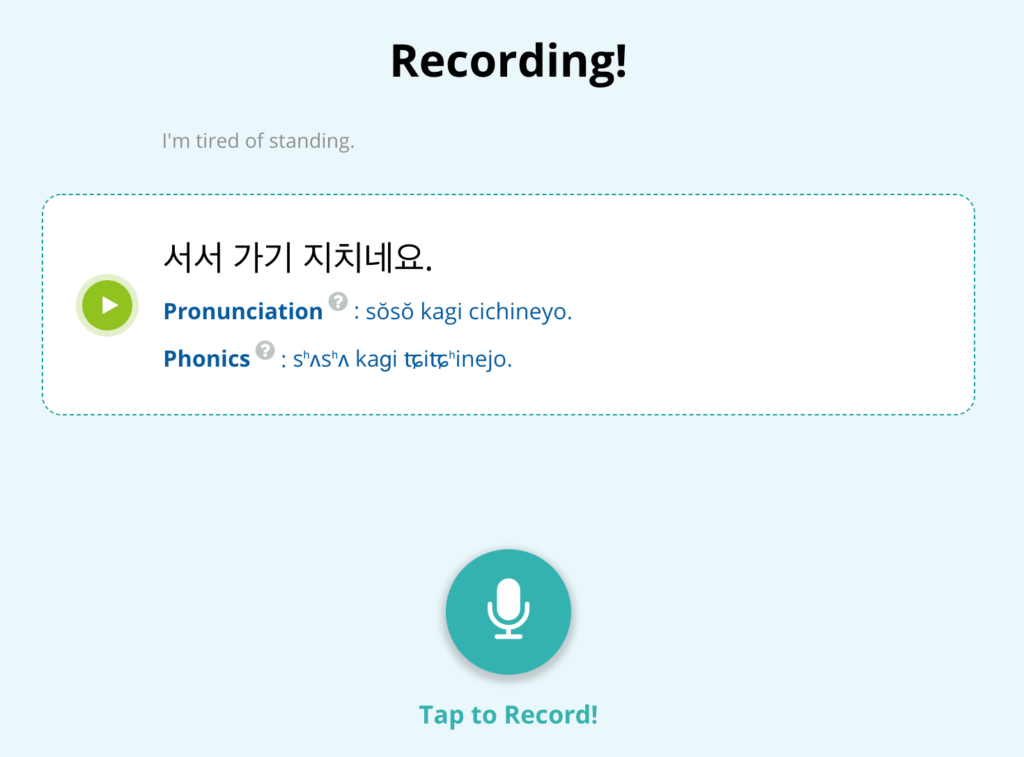
Thirdly, Glossika spaces repetitions.
Glossika intelligently spaces repetitions so that you memorise the structures and words over time. And it asks for feedback to say if a sentence was too hard (more repetitions) or too easy (removes it).
Importantly, you don’t need to memorise everything with Glossika. You can review as many times as you want before adding more words.
Today you’ll learn “She doesn’t have a car“. The word for “car” might be hard for you. But next week you’ll learn “Is the car broken?” and later you’ll learn again “I can’t find my car keys”. Like in real life, you’ll hear words again naturally.
Reason 2 we love Glossika: Loads of languages!

At the time of writing (2022) Glossika has over sixty languages. And they’re all included in the membership.
Glossika includes the less-resourced languages we’re learning, Egyptian Arabic and Swahili, plus a bunch more languages for which there are limited resources:
- Chinese in the forms of Mandarin, Cantonese, Taiwanese and Wenzhou-nese (!)
- Persian/Farsi (whish Jo is using)
- Two variants of Vietnamese — admittedly, I only recently learned there were two
- Even UK English for those of us who don’t want to be instructed by an American
Some endangered languages are free, too (see the next section).
Hopefully, in the future, they’ll add Australian English, as I’m getting a little rusty.
The best part is that you can learn any language using any language. This is wonderful in an age where most language resources are in English. If your mother tongue is Arabic, you can learn Chinese without having to go through English.
Reason 3: Glossika helps smaller languages grow by providing them for free!
Glossika currently lets you study the following languages for free:
- Catalan, from the Catalonian region of Spain (see our comparison of Spanish vs Catalan for more info)
- Gaelic, the Scottish language
- Hakka, two variants of the Greater Chinese language
- Taiwanese Hokkien (Glossika is based in Taiwan)
- Kurdish (Sorani) — one of the three major Kurdish languages
- Manx, a Celtic language
- Welsh, from Wales
- Wenzhounese, a Chinese language from the Wenzhou province
All of these languages are in various stages of active support or revival and it’s really nice for Glossika to provide them for free — what an amazing resource.
How to use Glossika effectively in language learning
We started using Glossika in 2018, and have learned a lot about how to make the most of it.
In summary —
- We don’t use Glossika first
- We don’t use Glossika exclusively
- When we use Glossika, we use it actively
See below for more details.
Tip 1: Don’t use Glossika first — Use books and tutors
As great as Glossika is, I would never recommend it for someone just starting out in a language. Start with a textbook and learn all the basics of a language. Glossika thinks you can start with Glossika, and that it’s OK to be overwhelmed.
I tried using Glossika first with Korean — but it didn’t go well. I’ve learned tons of languages, and am used to being overwhelmed and uncomfortable. But the result was that I was confused a lot of the time and I learned slowly.
In Korean, there are many ways to end a sentence to modify it for tone. It takes time to learn all these — longer than it takes to learn conjugations, for example. So it took around 3 months of self-study of Korean before I felt comfortable using Glossika. I still find some sentences confusing.
Contrast with Arabic, where I spent two weeks with a book first and learned conjugation, some words and the way sentences work, and then started Glossika. Even though their placement test only put me at the very bottom rung, I actually progressed and learned.
Here’s what you should know before you start using Glossika:
- Alphabet (for Chinese, learn how Pinyin works, plus some foundational characters) and pronunciation
- Verb conjugation, at least in most common forms (present, perfect, simple past, simple future, imperative)
- Sentence structure (where subject, object, adjectives and verb go usually)
- Pronouns and prepositions
- Plurals and other core grammar
- Politeness concepts where it exists in a language
- Core vocabulary of a few hundred words
Have a look at our 80-20 vocabulary list for a suggestion of words you might want to learn.
After learning the basics of any language from a book for 2-4 weeks you’ll start to feel like you want to hear how sentences are actually made. This is where Glossika shines.
Tip 2: Don’t just use Glossika
Glossika is, on paper, purported to be the only tool you need to learn a language. You will definitely learn a lot through it.
However, Glossika is not all you need to learn a language, for the following reasons:
Glossika mostly just encourages you to listen and repeat. You can optionally type things, and record your voice.
But these still aren’t dialogue, or listening, or having actual conversations with people. The best way you can learn is still with a teacher.
Glossika doesn’t teach what you personally want to learn. If you mostly talk about motorcycles, weightlifting, and coffee (just a random example, nobody I know personally), Glossika’s vocabulary isn’t going to be suitable.
But I never learned the sentence “I am trying to eat less meat, but that doesn’t mean I like tofu,” which is super useful to me.
You’ll waste time in Glossika trying to guess/infer grammar when someone could just explain it to you. You’re smart. You probably can figure everything out on your own by inference.
But you don’t have to guess. You’re not an archaeologist who just discovered the Rosetta Stone; you’re an adult who can ask questions and learn rules.
Just as it’s useful to know in English rules about how to use apostrophes or the difference between “were” and “we’re”, it’s useful to learn rules in other languages like how to make plurals in Arabic, the different forms of de in Chinese (的, 得, and 地) and when to use “por qué” and “porque” in Spanish.
Tip 3: Actually repeat words out loud. (Mumbling is OK)
At its core, as we mentioned, Glossika is all about listening and repeating. They say you can “mumble your way to fluency”. But what does this mean?
“Mumbling” sounds dubious, but they mean saying it “in your head” is NOT enough. You need to articulate the words.
When you say words out loud, you’ll find that you might have missed some detail. Was there an article there? Was there a word they pronounced with liaison, blurring over it? You’ll catch yourself and learn more.
Settings to use: We like to set “Interval Between Sentences” at 2x for the target language to give time to repeat more than once. This means if a sentence in the target language takes 2 seconds to say, you’ll have 4 seconds to say it.
Tip 4: Go beyond repeating and guess the answer
Rather than repeat, try to go one level up and guess the whole answer before they said it. After the app says, for example, “Why are you putting that coat?” think how you would say that in the target language.
This is pretty tiring. But it’s such a good way of drilling things.
Glossika does have a “type the answer” setting, but I don’t like it — I’m learning to speak, not to type.
Settings to use: We set “Interval between sentences” at 2x for the source language to give us time before the target language is said. That way we have time to guess the answer.
Tip 5: Learn actively — Look things up when you don’t understand
Learn actively. It’s tempting to think you can learn passively, and I’m sure you can. But that’s a slow way to go.
Every time you come across a word or phrase you don’t understand, if you can’t figure it out from inference, look up the words. This is especially important when you see two similar sentences like I did recently.
There are two main ways of saying “It’s raining” in Arabic. They’re mostly equivalent, but I wanted to look up the words to see how they were related.
If you take notes of words you’ve learned through Glossika you’ll find that you will internalise the phrasing more quickly because you’re only focusing on phrasing and less on new words you didn’t know existed.
A side note — don’t just listen to Glossika passively in the car or while multitasking. It’s probably better than nothing, of course, but be careful not to do things as a placebo for guilt.
Tip 6: Substitute your own words to help remember
Modify sentences by putting in your own words.
If you learn the sentence “There’s a book on the table”, think to yourself: What else could be on the table? Where else could the book be? Make modifications like
- There’s a pen on the table
- There’s a book next to the table
- There’s a pen on the floor
This would normally take a very long time to do, so I’d only suggest you do this for the most difficult sentences that you find yourself spending a long time memorising, that you’re really struggling with.
Tip 7: Note down new words you’ve learned
Keep a notebook, a Google Sheet, or use Anki to record new words you learn.
This is especially useful for very difficult words, like verbs requiring conjugation. I think “I want to learn that in a number of other ways right now.” So I look it up and write down a few sample sentences.
Tip 8: Be aggressive in marking things as easy or hard — don’t waste time
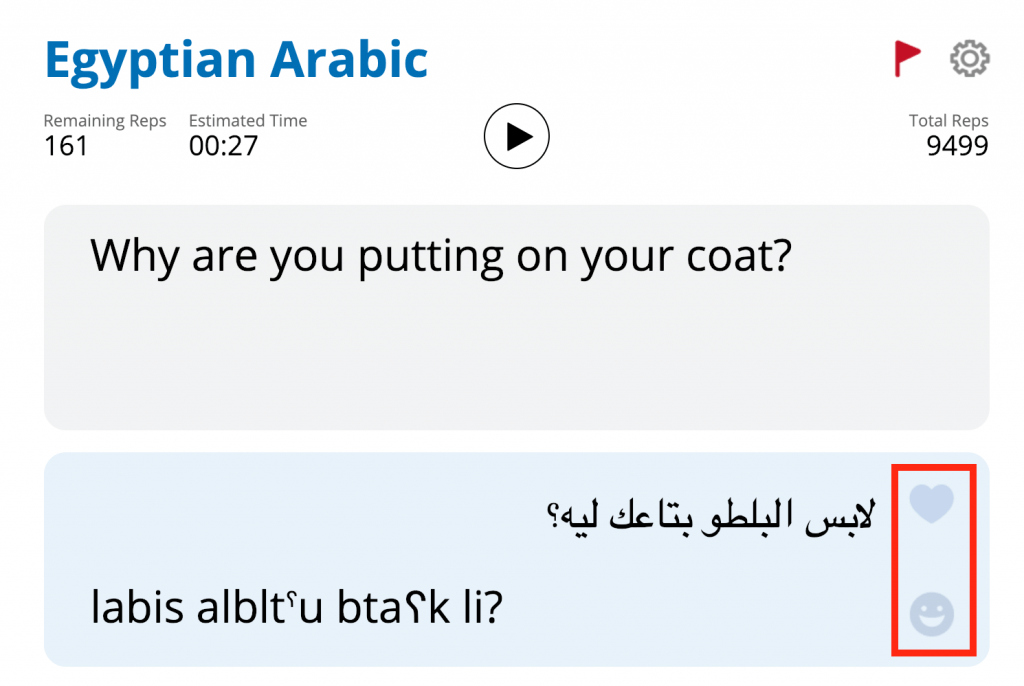
Glossika gives you the option of marking every sentence you learn with a heart (❤️) or a smiley (😊). But these don’t have the intuitive meaning you think they do.
- Heart emoji (❤️): This means this sentence was hard. You like it, and know it’s important, so you want to keep studying it.
- Smiley (😊): this means this sentence was easy. It felt good. You don’t need to see it ever again. (Wow, harsh interpretation of a smiley face).
How to use the heart (difficult): if you still need to practise a sentence and suspect Glossika doesn’t know, and might start cycling it through less and less, mark it with a “heart”. This tells Glossika that you want to study it more, and it’ll make sure you see it again.
How to use the smiley (easy): Sometimes, phrases come up that you’ve mastered. Maybe you learned them from teachers or textbooks, or they were just so easy that you mastered them.
Regardless, don’t waste time. You need to feel uncomfortable the whole time you’re studying like you’re pushing yourself. There’s no reason to get exhausted from monotonous study — it’s not going to help you.
That’s why I suggest that as soon as you know you don’t need to hear a sentence again, cut it out by marking it with a smiley face.
Tip 9: Learn 5-10 new sentences a day

The more sentences you add, the more repetition the algorithm builds into your daily study routine. This can get unwieldy if you go adding too many sentences.
In our old Glossika review, we described the difficulty of blending new sentences with old ones.
These days in the latest Glossika version, you choose when to add new sentences.
I find that more than 15 gets crazy and means I spend over an hour reviewing and learning new sentences. I’ll only do that if I’m feeling really ahead and have lots of time.
Things We Think Glossika Should Improve
Glossika isn’t perfect. Just for transparency in this Glossika review, these are the things we’d like to see it improve.
My main problem with any sentence bank app is that they’re not localised for language and culture. The same sentence pairs exist for any language, but many languages vary dramatically depending on gender or formality level.
And languages have more or fewer ways of saying things. For example, French has a vast array of everyday greetings, whereas Mandarin Chinese has very few used in every day life (ni hao is your friend!)
- Improve the mobile experience: We Glossika on our phones a lot. Now that Glossika has apps, the experience has improved a lot. But it’s still laggy and not as responsive as a native app.
- Eliminate offline dependence. In the full paid version of the app can you download 500 sentences for offline use, and the basic version lets you download 100 sentences. I love to go through language study on planes and regional buses, so more offline caching would be great.
- Improve language/culture localisation: For example, Arabic verbs conjugate differently for men and women. It seems weird to just have one sentence in English, and then have the multiple sentence options only in the written card. Or for another example, when people or places have names, it’d be more appropriate to talk about Ibraheem and Youssef in Egypt, and Peter and Mary in an English course.
- Tell me what happens after I report an error*: Sometimes there’s an error in the content. Like once, the English sentence said one thing, but the Arabic sentence said that plus a follow-up thing. I reported it. I am pretty sure someone receives those. I would just love to know what happens, like if there’s any point to reporting them.
- Make it cheaper, for just one language: Glossika used to cost $25 a language for a whole package for one language. This was when it was MP3s. Now it’s $25 a month but for all languages. I think $10/month for one language would get them a higher sign-up rate.
* Yes, there are errors. But they’re rare (less than 1/100 cards) and usually not serious (a whole section of a multi-sentence phrase is missing).
How Much Is Glossika?
For the full-fat version of Glossika with every language, you pay $30.99 a month or $300 for the year (which is $25per month). You can get a free trial for one week to see if you like the content and style.
To study just one language, you can also opt for the “Basic” version of Glossika. You’re allowed to change your language every 30 days. This costs a bit over half — $16.99 per month monthly, or $13.33 per month ($160 for the year) if you pay annually.
We consider Glossika a useful part of the early (but not beginning) language-learning journey and highly recommend it.
There are a few deals a year, which we’ll make available as they happen. But you can at least try it out month-to-month and then get the yearly deal if you think it’s worth it.
Try Glossika for a Week for Free
Try Glossika’s method of teaching language through thousands of sample sentences. Learn languages by sentences spoken by native speakers in over 60 languages.
Tip: Ask for a week’s extension on the trial if you think one week wasn’t enough. I’ve known them to oblige…
A bit about us…
We’ve been studying languages for many years, but we’ve been doing it more intensely since starting Discover Discomfort in 2018.
We started using Glossika only then. Since then, between us, we’ve used it for
- Persian (Farsi)
- Korean
- Hebrew
- French
- Arabic (Egyptian and Moroccan), and
- Swahili
I used Glossika a lot with Swahili and with Egyptian Arabic (some 20,000 reps in each). I got to about 6,000 reps in Hebrew, and am still using it with my Korean (a little more slowly as Korean is so hard; and I have other, similar resources that I prefer).
Jo used it a lot for Persian and for French.
While we’re experienced language learners, we’ve also recommended Glossika to enough people who aren’t experienced to know that it can work for a lot of people. In fact, for many, it works better than it does for us because it fits into their day better.



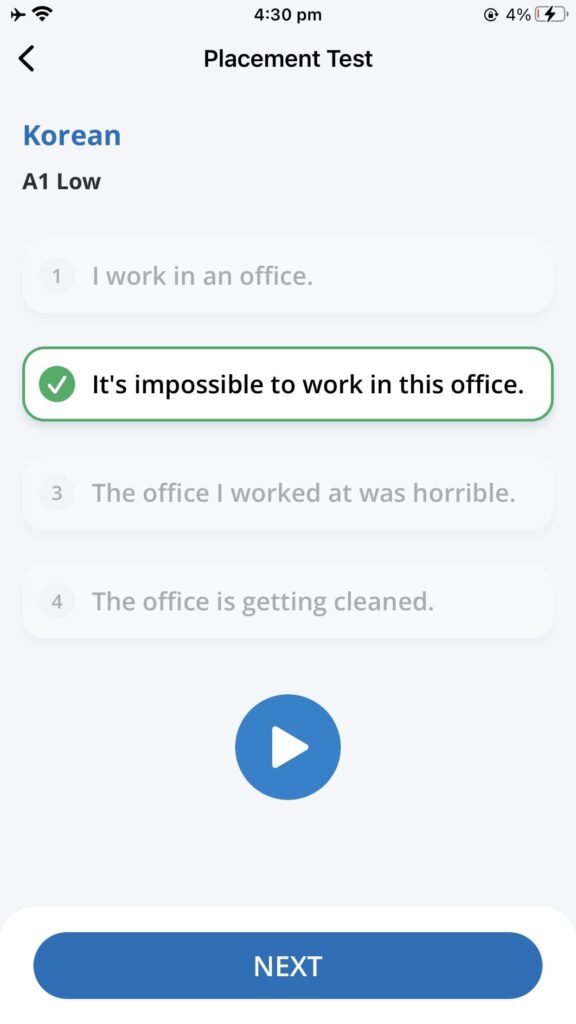

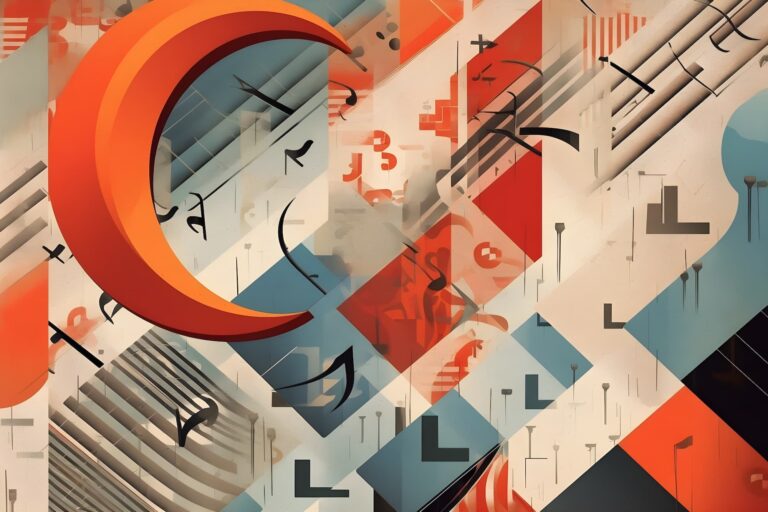
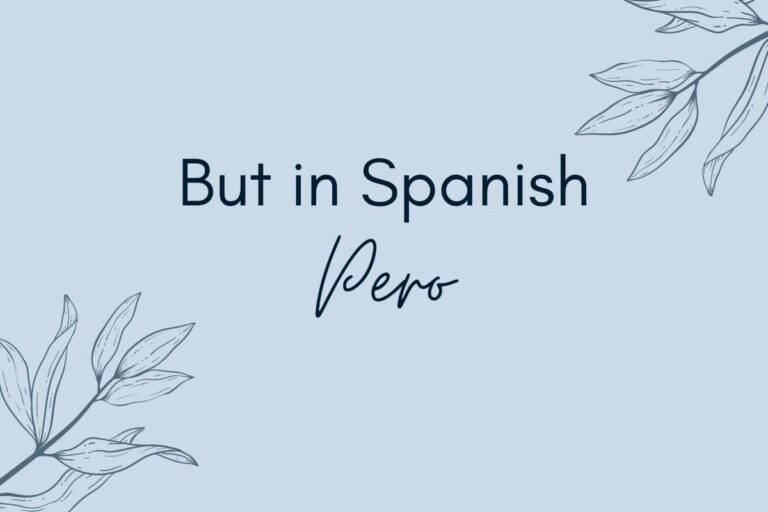


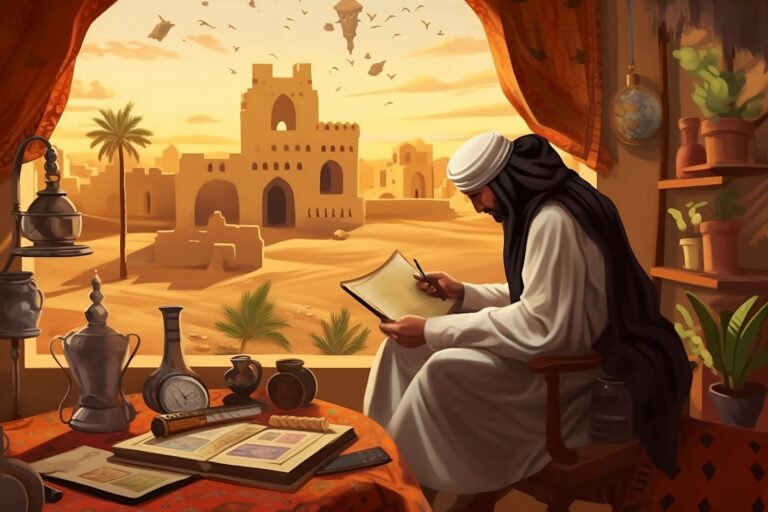
Great review! Unfortunately this app is not in the Singapore Apple app store. Strange.
Hi Tai — it’s not an “app” in that sense. It’s a web application. You use it from the website/browser, which isn’t a great experience in this case (but it can be). So you have the same access I do.
Let me know how you like using it. Drop us a line with your thoughts if you like!
Great Article Dana Hooshmand
Thank you!
Thanks for the review. I signed up for the trial yesterday. (I too was looking for the app!) I’ve been studying Italian for 2 years and still can’t follow a native very well. Really appreciate your tips and will try them. I’ll report back. Thanks, Scott
How has it gone? I hope you get this response!
Very informative review. Any idea how to set “new sentences” to 15? I can’t seem to find out how to set a number for it.
Hi there, you used to be able to in the old version. In the new version, you just add 5 at a time. If you let it continue, and don’t stop it, it’ll keep teaching you more, and more, and more until your head explodes… (or you stop it)
I used to love Glossika, before they went to the subscription model. It helped me tremendously with my fluency in intermediate level Spanish. I could use it everywhere, gym, car. Then they changed to subscription model. Experience is bad. Very little control over it. Works best if you are sitting at your computer. Forget using it driving (I used to do that all the time with the old Glossika). Forget using it running or any other time you are on the go. I tried it for a few months and am about to cancel it. I wish I could still… Read more »
Sorry to hear it has gone like that Philip. I’d have loved to try it the old way. What language are you learning?
The interface really bugs me.
The things that REALLY bugged me though was that my girlfriend got to the end of Persian… it only went up to A2! 🙁
I’m using the new subscription model for Vietnamese (Southern). It is very clunky to use but the lack of mobility (or challenges with using it on the go, are a deal breaker. They took a great idea and turned it into a Rosetta Stone kind of thing. I hardly ever use it any more and will cancel subscription when it expires, unless they make some serious changes, including off line study.
Yeah, it’s almost unusable on mobile. Add in flaky data networks (which is normal while commuting on a metro for example) and it’s enough to make someone go pure Anki (that’s all I use when mobile).
Best review I’ve seen yet. So given your Persian comment, is there any way to determine how « deep » Glossika goes with a given language?
Hi Floyd, the best (I think the only) way is to email them and ask! They tell you how many thousands of sentences they have. For the ones that we’ve asked about it’s 5,000+.
Actually, I have to update this post, as they either made more Persian available, or we were doing something wrong.
I agree with Philip Lo. I used to listen to Mandarin and Icelandic with my previously downloaded mp3 files while driving, cooking, etc. It was very good. But I don’t have the time to delve deep in all the languages I’m nibbling on, so the subscribe model doesn’t suit me.
Just wanted to say this was a really great review. Only feature I’d like is on mobile the play button was at the bottom so it’s easier to reach. I like to play / pause a lot on tricky ones as I find trying to recall it myself will help my memory more.
Really really good review. Hopefully you do a fresh post on Glossika soon as that was a great read. I’ve just started using it for French for 5 sentences a day so 50 reps incl review.
I’m 1 day into glossika French and I have no problem with the content, but the instruction on how to use the program is poor. Why do you record – you can’t retrieve the recording and I don’t see anywhere to get feedback on your pronunciation? I don’t want to type and there is no real explanation of when to type, anyway. If I change to just listening but repeat, will glossika still record my progress and work with me interactively? This stuff should all be explained at the very start of the program. I want to improve my French,… Read more »
Totally agree, Rob. It hasn’t become more intuitive since we started using, either.
Try Speechling. It, too, isn’t perfect, but what is? And it’s fancy, new, and a lot more stuff is free.
Up until 6 years ago, Glossika also printed a book in paper form. In the meantime they decided to go full-cheap, online only. The book is actually very helpful for retention, even though the content is the same as what is online. Trying to learn anything online is harder and challenges the attention span unnecessarily compared to learning from a paper format that does not constantly bombard you with distractions. Online is a fine supplement, but no replacement, for good old printed material.